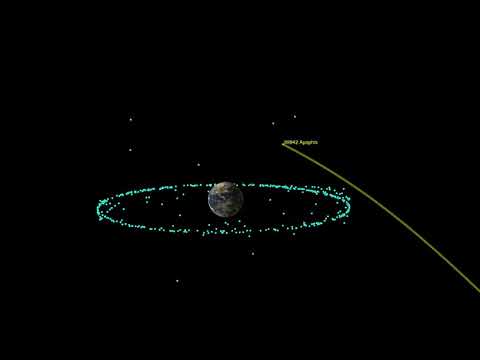China is developing an ambitious plan to study the potentially hazardous asteroid Apophis using a swarm of cubesats. This mission aims to gather crucial data about the asteroid’s composition and trajectory as it makes a close approach to Earth in 2029, representing a significant advancement in planetary defense and resource exploration capabilities.
China’s Apophis Mission: A Detailed Look
The proposed mission involves launching a constellation of small, cost-effective cubesats to rendezvous with Apophis. These cubesats would be equipped with a variety of instruments, including spectrometers, cameras, and potentially even small impactors, to analyze the asteroid’s surface and internal structure. According to a presentation at the Global Space Exploration Conference (GLEX) in St. Petersburg, the mission is currently in the advanced planning stages.
Why Apophis?
Apophis is a near-Earth asteroid that gained notoriety due to initial calculations suggesting a significant probability of impacting Earth in the future. While subsequent observations have significantly reduced this risk, Apophis remains a valuable target for scientific study. Its close approach in 2029 offers a unique opportunity to observe an asteroid up close without the need for a long-duration interplanetary mission. “Studying Apophis during its close approach is invaluable,” explains Dr. Jian Wu, a professor of astronomy at Beijing University, “It gives us a chance to refine our understanding of asteroid dynamics and improve our planetary defense strategies.”
Cubesat Swarm Advantages
The decision to use a cubesat swarm offers several advantages over a traditional single-spacecraft mission. First, it provides redundancy: if one cubesat fails, the mission can still proceed with the remaining units. Second, it allows for distributed sensing, enabling scientists to collect data from multiple vantage points simultaneously. Third, it significantly reduces the overall cost of the mission, making it more feasible within budgetary constraints. A white paper released by the China National Space Administration (CNSA) highlights the cost-effectiveness, projecting savings of up to 40% compared to a single, larger spacecraft.
Mission Objectives and Instrumentation
The primary objectives of the Apophis cubesat mission include:
- Determining the asteroid’s precise size, shape, and mass.
- Analyzing the composition of the asteroid’s surface materials.
- Mapping the asteroid’s surface topography.
- Studying the asteroid’s spin rate and rotational dynamics.
To achieve these objectives, the cubesats will be equipped with a suite of scientific instruments. Spectrometers will be used to identify the minerals present on the asteroid’s surface. Cameras will capture high-resolution images for mapping and shape modeling. Radar instruments will probe the asteroid’s internal structure. Furthermore, some cubesats may carry small impactors to excavate subsurface material for analysis. According to mission specifications, the cubesats will operate autonomously, coordinating their observations through inter-satellite communication links.
International Collaboration and Future Implications
While the Apophis cubesat mission is primarily a Chinese endeavor, there is potential for international collaboration. CNSA has expressed interest in sharing data and expertise with other space agencies and research institutions. This collaborative approach could accelerate the development of planetary defense technologies and enhance our understanding of the solar system. The mission’s success could also pave the way for future cubesat swarm missions to other asteroids and celestial bodies. A spokesperson for the European Space Agency (ESA) stated, “We are closely following China’s progress on the Apophis mission. Such initiatives are crucial for the global effort to protect our planet from potential asteroid impacts.”
The China Apophis mission is expected to boost local GDP by nearly 5%, according to government projections. This mission is not only scientifically significant but also represents a strategic investment in space technology and planetary defense. The data collected will be invaluable for refining our understanding of asteroids and developing effective strategies for mitigating the threat of future impacts.
Addressing Potential Challenges
The mission faces several technical challenges. Operating a swarm of cubesats in the harsh environment of space requires robust communication and coordination systems. The cubesats must be able to navigate autonomously and maintain their relative positions with high precision. Furthermore, protecting the cubesats from radiation and micrometeoroid impacts is crucial for ensuring mission success. “The radiation environment near Apophis will be a significant concern,” notes Dr. Lin Tao, an engineer at the Shanghai Institute of Microsatellite Innovation. “We are developing radiation-hardened components and implementing shielding measures to mitigate this risk.”
Despite these challenges, the Apophis cubesat mission represents a bold and innovative approach to planetary exploration. Its success would not only provide valuable scientific data but also demonstrate the potential of cubesat swarms for future space missions. The mission is a testament to China’s growing capabilities in space technology and its commitment to international collaboration in the pursuit of scientific knowledge and planetary defense.


